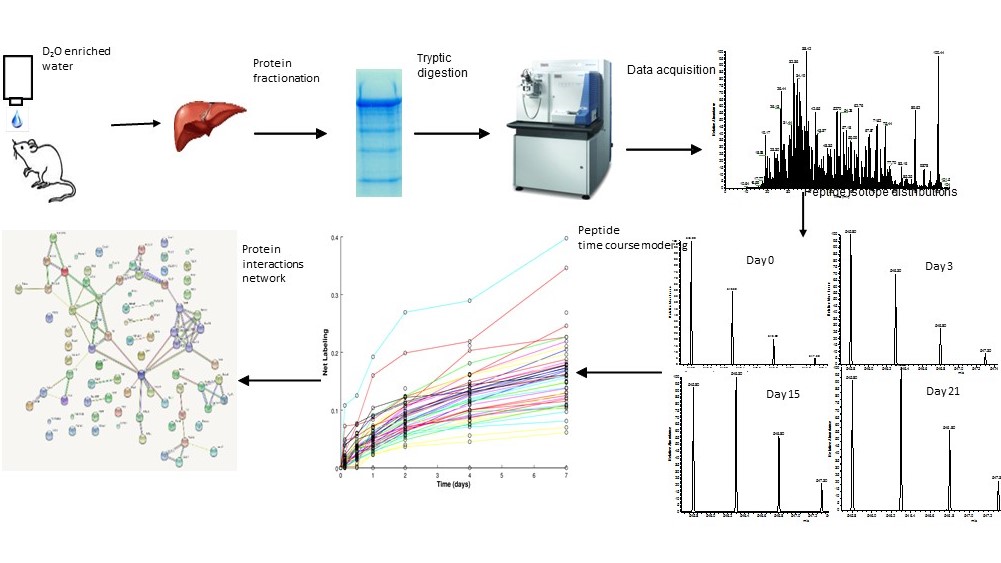d2ome, a set of software tools, automates in vivo protein turnover analysis from LC-MS data of
heavy water metabolic labeling. As input, it uses mass spectral data (mzML files) and the
corresponding protein identification results (mzIdentML files).
It is unbiased; it will analyze all proteins/peptides that pass the pre-defined identification thresholds
(in identification scores and FDR). Peak detection and mass isotopomer quantification are done using MS1
scans acquired using high resolution and accuracy mass spectrometers. User-provided settings allow
flexibility in such parameters as mass accuracy, peptide/protein filtering thresholds, and limits of chromatographic
elution window. The quantification is done in three-dimensional space (chromatographic time, m/z, and abundance).
The gradual incorporation of deuterium into peptides/proteins is determined via a decay model of the relative isotope
abundance of the monoisotope. The model is fit to the experimental data via non-linear regression. Rate constants from
all peptides of a protein are statistically analyzed with Grubb’s test to filter outliers. The median of the rates is
assigned to the protein.
d2ome was tested using results from alternative methods of label incorporation (labeled Val), comparisons with other
tools of similar functionality, and analysis of GC-MS data of heavy water.
d2ome has been coded solely in the C/C++ language of the MS Visual Studio. It can be run either using the graphical user
interface or from the command line in MS DOS. It requires at least 10 GB of RAM. d2ome is freely available.
The techniques used in the development of d2ome are described in:
Sadygov RG, Avva J, Rahman M, Lee K,
Sergei Ilchenko S, Kasumov and Borzou A., d2ome, Software for in Vivo Protein Turnover Analysis Using Heavy Water Labeling
and LC–MS, Reveals Alterations of Hepatic Proteome Dynamics in a Mouse Model of NAFLD, J. Proteome Res., 2018 17(11):3740-3748.
To
Download the software, please, provide your name, email and institution information.
Name :
(Last*)
(First*)
Email ID*:
Institution*:
* Please, provide the requested information.
